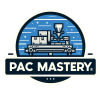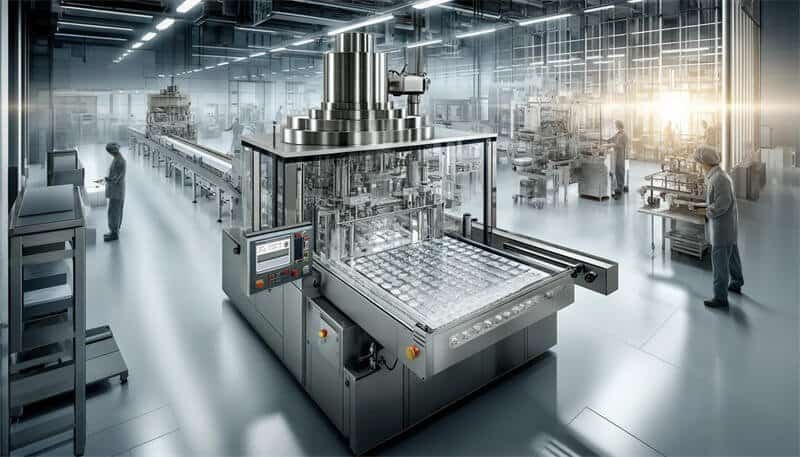Key Takeaways
| Question | Answer |
|---|---|
| What is a blister packing machine? | A machine that forms blisters from plastic or aluminum, fills them with products, and seals them. |
| Types of blister packing machines? | Manual/Semi-Automatic, Fully Automatic, Roller-Type, Flat-Plate, Roller-Plate |
| Cost range? | From approximately $7,339 to over $25,100 depending on the model and features. |
| Advantages of blister packaging? | Tamper resistance, product visibility, protection, accurate dosing, customization |
| Disadvantages of blister packaging? | Environmental concerns, difficulty in opening, higher cost for small-scale production |
| Key considerations when buying? | Budget, packaging needs, machine capacity, material compatibility, space requirements |
| Automation levels? | Manual, semi-automatic, and fully automatic |
| Materials used? | PVC, PVDC, aluminum foil, cardboard |
| Unique features? | Rapid heating, side clamping, plug for blister definition, twin-seal press |
Introduction
At PacMastery, our mission is to revolutionize the packing machinery industry through innovative solutions, unparalleled quality, and relentless dedication to customer satisfaction. We strive to empower businesses around the globe with cutting-edge technology and customized machinery, ensuring efficiency, reliability, and excellence in every packaging process. Committed to sustainability and ethical practices, we are not just building machines; we’re crafting a more efficient, productive, and responsible future in packaging.
Blister packing machines play a crucial role in various industries, including pharmaceuticals, food, and electronics. These machines are essential for creating durable and tamper-resistant packaging that ensures product integrity and consumer safety. This guide delves into the different types of blister packing machines, their costs, features, and the key factors to consider when choosing the right machine for your needs.
What is a Blister Packing Machine?
A blister packing machine forms blisters from plastic or aluminum materials, fills them with products and seals them with a backing material like paperboard or aluminum foil. These machines are widely used in the pharmaceutical industry for packaging tablets and capsules, as well as in other industries for packaging small consumer goods, food items, and electronic components.
Types of Blister Packing Machines
Manual/Semi-Automatic Blister Packing Machines
Manual and semi-automatic blister packing machines require human intervention in the packaging process. These machines are ideal for small-batch production and are more affordable compared to fully automatic machines. They offer a balance between human involvement and automation, making them suitable for businesses that are new to blister packaging or have lower production volumes.
Pros:
- Lower initial cost
- Suitable for small-scale production
- Greater control over the packaging process
Cons:
- Lower production speed
- Higher labor requirements
Fully Automatic Blister Packing Machines
Fully automatic blister packing machines handle the entire packaging process with minimal human intervention. These machines are capable of high-speed production and are ideal for large-scale manufacturing operations. They offer consistent quality and efficiency, making them a preferred choice for high-volume production.
Pros:
- High production speed
- Consistent quality
- Reduced labor costs
Cons:
- Higher initial investment
- Requires more space and maintenance
Specific Types Based on Operation
- Roller-Type Blister Packing Machine: Utilizes a roller system to transfer blister packs and perform sealing operations on rollers.
- Flat-Plate Blister Packing Machine: Uses flat-forming molds and a flat sealing mechanism for packaging.
- Roller-Plate Blister Packing Machine: Combines features of both roller-type and flat-plate machines for versatile packaging solutions.
Key Features and Specifications
Productivity and Speed
Productivity in blister packing machines is measured by the number of packages the machine can handle within a specific time frame. Speed is crucial for meeting production demands and ensuring efficiency. Machines with adjustable speed settings allow for greater control over the packaging process.
Material Specifications
Blister packing machines must be compatible with various packaging materials such as PVC, PVDC, and aluminum foil. Choosing the right material is essential for ensuring the durability and protection of the packaged products.
Automation Levels
Blister packing machines are available in manual, semi-automatic, and fully automatic versions. The level of automation impacts the production speed, labor requirements, and overall efficiency of the packaging process.
Cost of Blister Packing Machines
Factors Influencing Cost
The cost of blister packing machines varies based on several factors, including the type and size of the machine, material compatibility, and automation level. Fully automatic machines tend to be more expensive due to their advanced features and higher production capabilities.
Price Range Examples
- Manual/Semi-Automatic Machines: Starting from approximately $7,339
- Fully Automatic Machines: Ranging from $25,100 and above
Understanding these factors will help you make an informed decision when selecting the right blister packing machine for your needs.
By considering the type of machine, its features, and your specific packaging requirements, you can choose a machine that will enhance your production efficiency and ensure the quality of your products.
To learn more about our innovative packaging solutions and how we can help your business thrive, visit our Comprehensive Guide to Blister Packaging Solutions.
Advantages and Disadvantages of Blister Packaging
Advantages
Blister packaging offers several benefits that make it a popular choice across various industries:
- Protection and Durability: Blister packs provide excellent protection against environmental factors such as moisture, light, and air. This ensures that the product remains in optimal condition throughout its shelf life.
- Tamper Resistance: The sealed nature of blister packaging helps prevent tampering and ensures the product's integrity. This is especially important for pharmaceuticals.
- Product Visibility: The transparent plastic front of blister packs allows consumers to see the product without opening the package, enhancing customer trust and satisfaction.
- Accurate Dosing: Blister packs are designed to dispense a single dose at a time, making them ideal for medications and other products that require precise dosing.
- Customization Options: Blister packaging can be customized to fit the specific size and shape of the product, providing a tailored packaging solution that enhances brand recognition.
Disadvantages
Despite its numerous advantages, blister packaging also has some drawbacks:
- Environmental Concerns: Blister packs are often made from non-biodegradable plastics, which can contribute to environmental pollution if not properly disposed of.
- Difficulty in Opening: Some blister packs can be hard to open, which may be problematic for certain consumer groups, such as the elderly or those with disabilities.
- Higher Costs for Small-Scale Production: The initial investment and operational costs for blister packing machines can be high, making them less economical for small-scale production runs.
Expert Tips for Choosing the Right Blister Packing Machine
Selecting the right blister packing machine for your business requires careful consideration of several factors:
Assessing Your Needs
- Production Volume: Determine the number of units you need to package daily or weekly. High-volume production requires a fully automatic machine, while low to medium volumes can be handled by semi-automatic or manual machines.
- Product Specifications: Consider the size, shape, and nature of the products you will be packaging. Ensure the machine can handle the specific requirements of your product.
Budget Considerations
- Initial Investment: Evaluate your budget to see how much you can afford to invest in a blister packing machine. If funds are limited, consider purchasing a used machine or a semi-automatic model.
- Long-Term Benefits: While fully automatic machines have a higher initial cost, they offer significant long-term savings in labor and increased production efficiency.
Space and Maintenance
- Installation Space: Ensure you have adequate space for the installation and operation of the machine. Consider the machine's dimensions and the layout of your production facility.
- Ease of Maintenance: Choose a machine that is easy to maintain and has readily available spare parts. Regular maintenance is crucial for ensuring the longevity and optimal performance of the machine.
Conclusion
Blister packing machines are essential for businesses that require secure, tamper-resistant packaging for their products. By understanding the different types of machines, their features, and the factors to consider when purchasing, you can make an informed decision that best suits your needs and budget. At PacMastery, we are committed to providing innovative and high-quality packaging solutions that empower businesses to achieve greater efficiency and productivity.
For more information on our range of blister packing machines and other packaging solutions, visit our innovative blister packaging solutions page.
FAQs
1. What are the main types of blister packing machines? The main types include manual/semi-automatic, fully automatic, roller-type, flat-plate, and roller-plate machines.
2. How much does a blister packing machine cost? The cost can range from approximately $7,339 to over $25,100, depending on the machine's features and capabilities.
3. What materials are used in blister packaging? Common materials include PVC, PVDC, aluminum foil, and cardboard.
4. What are the benefits of blister packaging? Blister packaging offers protection, tamper resistance, product visibility, accurate dosing, and customization options.
5. What should I consider when choosing a blister packing machine? Consider factors such as production volume, product specifications, budget, installation space, and ease of maintenance.
For more detailed guidance on selecting the right packaging machinery, visit our comprehensive guide to selecting the right food packaging machinery page.
By leveraging the insights provided in this guide, you can optimize your packaging process and ensure that your products are securely and efficiently packaged, meeting both industry standards and consumer expectations. At PacMastery, we are dedicated to helping you achieve excellence in every aspect of your packaging operations.



